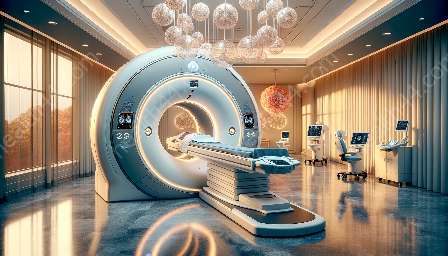When it comes to medical imaging, laboratory centrifuges play a critical role in enhancing the accuracy and efficiency of diagnostic procedures. Let's delve into the world of laboratory centrifuges, their applications, and their compatibility with medical imaging devices and other medical equipment.
The Functionality of Laboratory Centrifuges
Laboratory centrifuges are versatile pieces of equipment used in medical imaging to separate substances of different densities within a sample. This separation is achieved through the application of centrifugal force, which causes particles to settle at different levels based on their density and size.
Types of Laboratory Centrifuges
There are various types of laboratory centrifuges, each designed for specific applications in medical imaging. These include:
- Microcentrifuges: These are small and compact centrifuges used for separating small volumes of samples, such as DNA and proteins, in medical imaging research.
- Refrigerated Centrifuges: These centrifuges maintain low temperatures to prevent sample degradation, making them ideal for medical imaging procedures involving sensitive biological samples.
- Ultracentrifuges: Used for high-speed separations, ultracentrifuges are crucial in medical imaging for isolating particles with extremely small differences in density.
Integration with Medical Imaging Devices
Laboratory centrifuges are seamlessly integrated with medical imaging devices to optimize the diagnostic process. For instance, in diagnostic imaging laboratories, centrifugation is often used to separate blood samples for medical imaging tests such as MRI and CT scans. By providing clear, separated samples, centrifuges contribute to accurate and reliable imaging results.
Advancements in Centrifugation Technology
Recent advancements in centrifugation technology have further enhanced its compatibility with medical imaging devices. These innovations include the development of automated centrifuges that can be programmed to perform specific separation protocols, reducing human error and ensuring consistent results in medical imaging applications.
Compatibility with Other Medical Equipment
Besides medical imaging devices, laboratory centrifuges are compatible with various other medical equipment, contributing to a wide range of diagnostic and research applications. They can be integrated with spectrophotometers for analyzing DNA and RNA samples, as well as with cell counters and analyzers for medical imaging research and diagnosis.
Applications in Medical Imaging
Laboratory centrifuges find extensive applications in medical imaging, contributing to processes such as:
- Blood Analysis: Centrifuges are used to separate blood components for various medical imaging tests and analyses.
- Biological Sample Preparation: They are crucial for preparing biological samples for medical imaging research and diagnosis.
- Diagnostic Testing: Laboratory centrifuges play a key role in producing clear and reliable samples for medical imaging diagnostics.
Future Prospects
As technology continues to advance, the integration of laboratory centrifuges with medical imaging devices is expected to become even more sophisticated. With the potential for enhanced automation and data connectivity, laboratory centrifuges will play an increasingly vital role in driving accuracy and efficiency in medical imaging diagnostics.
Conclusion
From their fundamental functionality to their integration with medical imaging devices, laboratory centrifuges are indispensable tools in modern medical imaging. Their seamless compatibility with other medical equipment further underscores their significance in the field of diagnostic and research applications. As technology progresses, the role of laboratory centrifuges in optimizing medical imaging procedures is poised to expand, promising even greater advancements in diagnostic accuracy and efficiency.


